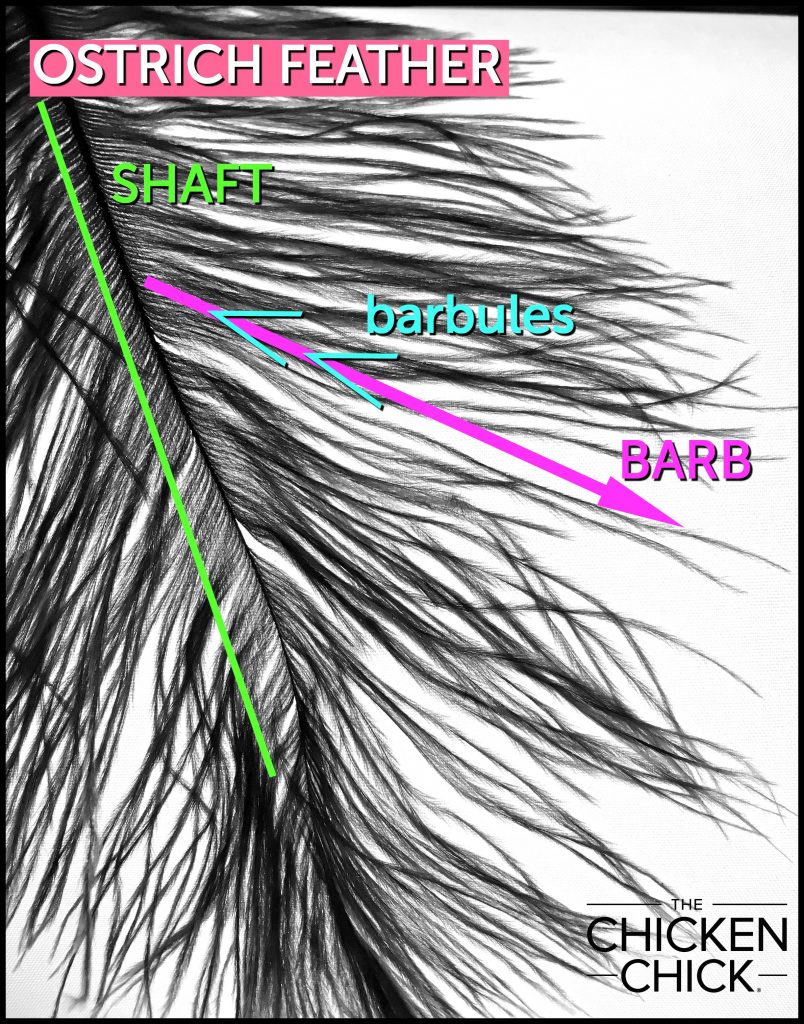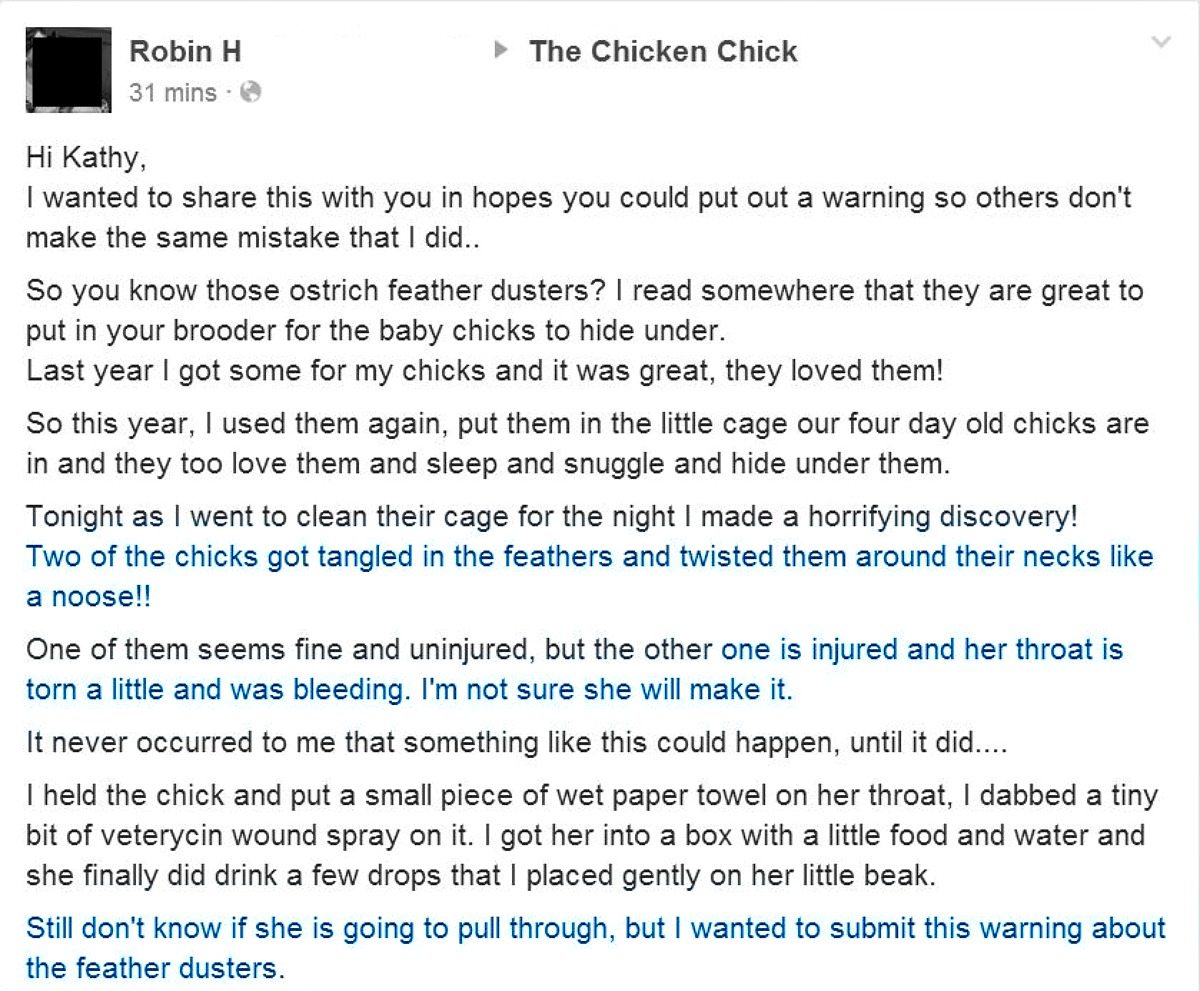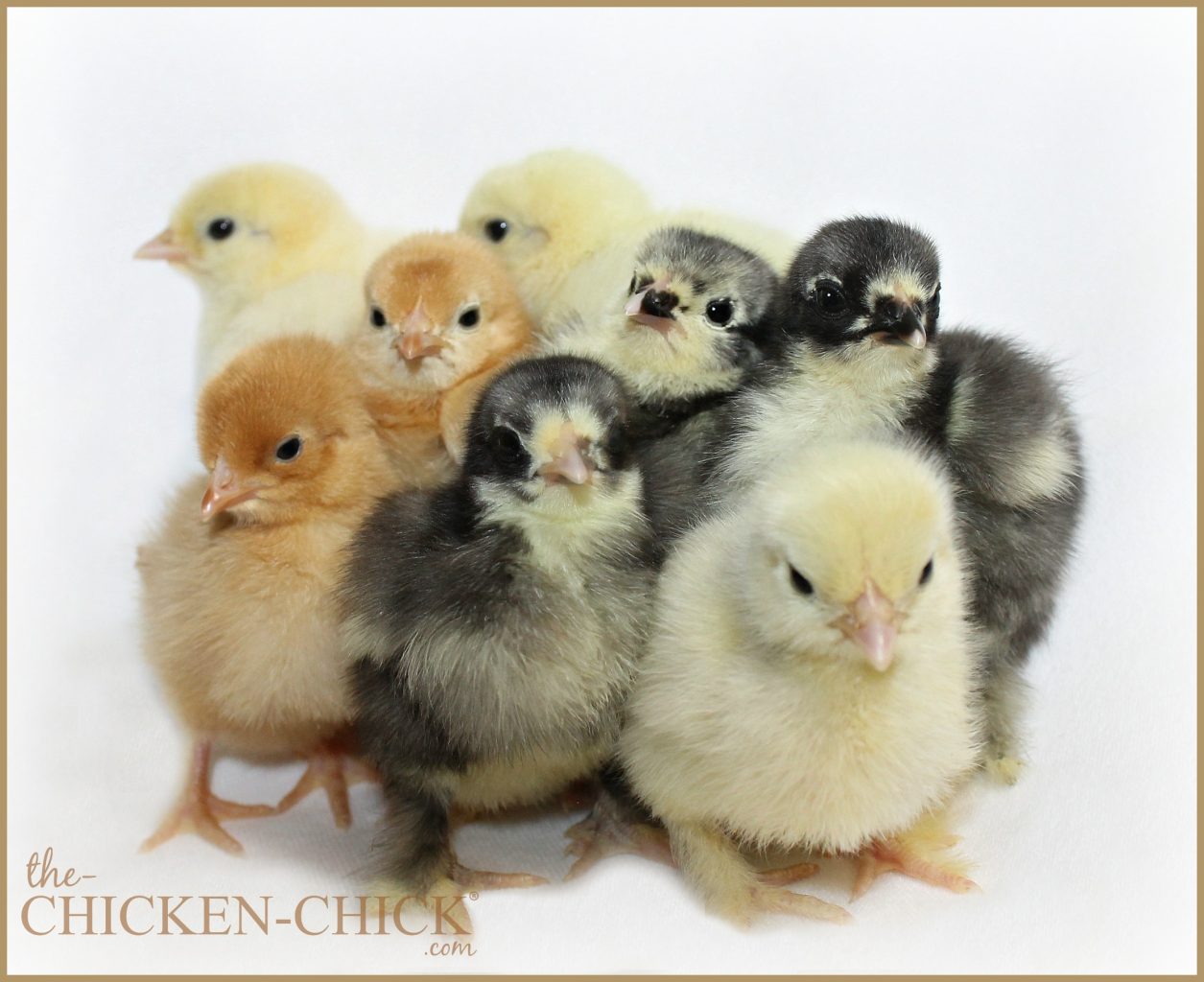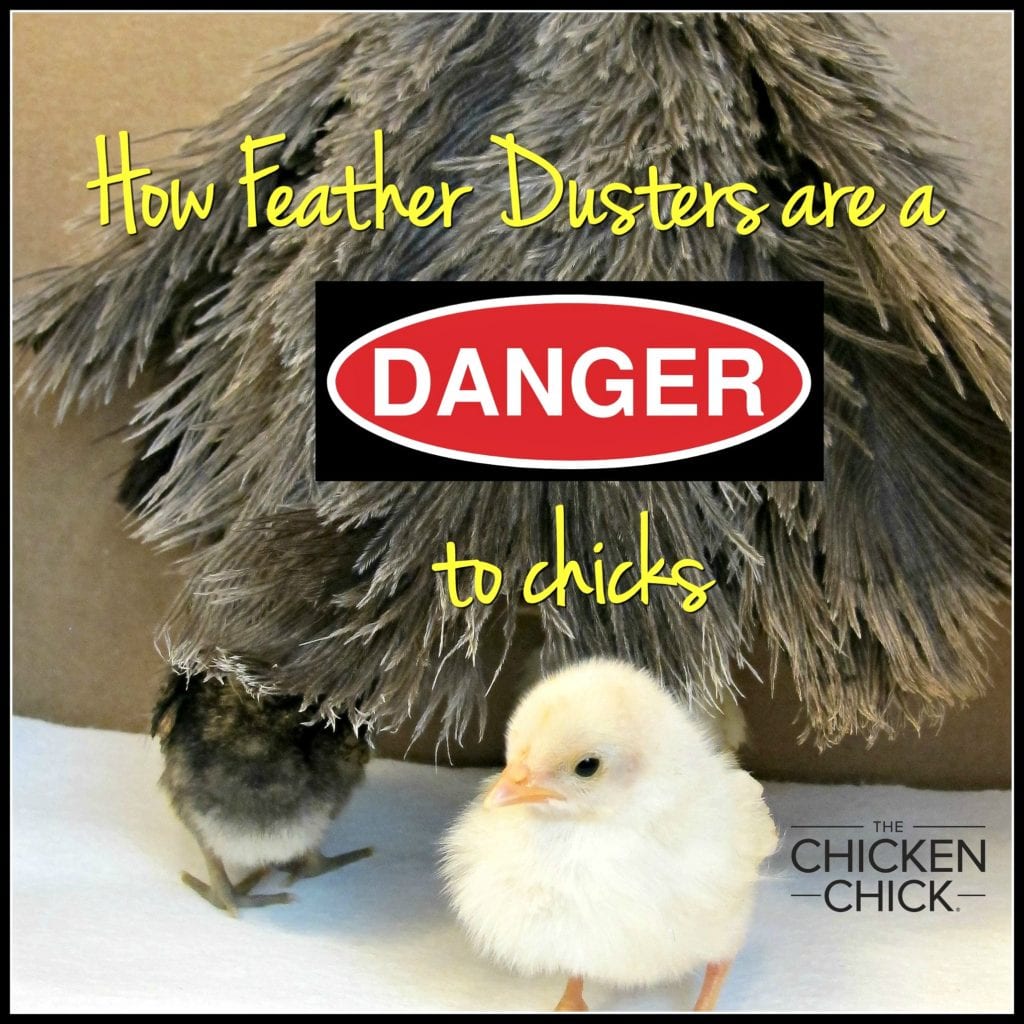In recent years, some backyard chicken keepers have begun hanging feather dusters in chick brooders without realizing the dangers they pose until it’s too late. While the practice may initially seem harmless, and chicks look adorable snuggled underneath ostrich feathers, they create a serious threat of injury and death to chicks.
Keeping chickens is a novel undertaking for most of us and best practices for meeting their needs are not necessarily intuitive, but we have an obligation to keep vulnerable chicks safe from unnecessary and dangerous gimmicks, so let’s explore what’s behind this feather duster business and what makes it dangerous.
CHICKEN VS. OSTRICH FEATHERS

Ostrich feathers are used to make dusters due to their ability to create static electricity, attracting dust that clings to them when brushed.
A typical chicken feather is stiff and mostly flat because the barbs that branch off the shaft are woven together by barbules and hooks. Ostrich feathers possess flexible shafts with extra-long barbs measuring 3″ in length or longer.
The static electricity generated between an ostrich feather and a baby chick’s down combined with the long, wispy barbs create a dangerous entanglement hazard in a brooder. A single pirouette underneath an ostrich feather is all it takes to form a noose around a chick’s tiny neck or ligature around its legs or feet.




WHY MIGHT SOMEONE PLACE A FEATHER DUSTER IN A BROODER?

THE CLAIM: A feather duster “imitates a mother hen.”
THE FACTS: Baby chicks cannot create or regulate their body heat when they first hatch, therefore, they need to be kept warm by a mother hen or with a substitute heat source.
A mother hen removes feathers from her breast to create a bald area of skin known as a brood patch, which allows her to apply the heat from her body directly to her hatching eggs and chicks.
The hen’s body heat provides warmth to her chicks, not her feathers. While her feathers can aid in trapping in air warmed by her body, the feathers themselves do not provide a source of warmth to chicks. A feather duster is not a make-shift mother hen.

CHICKEN KEEPING IN THE INFORMATION AGE
Families today keep chickens in backyards for different reasons and in different ways than in previous generations that raised them just as livestock for meat and eggs. They have become popular egg laying pets found in backyards of all sizes. As motives for chicken keeping have changed, so too has the way we share information and ideas, which is both a blessing and a curse.
We enjoy instant access to information at our fingertips 24/7 for every topic imaginable, but not all information online is reliable. Along with this evolution of purpose has come a fair amount of sketchy advice about how to care for them. Practices that seem harmless can go horribly wrong at the expense of innocent animals who rely on us to make the right decisions for them.
I encourage you to use common sense when making chicken care decisions. Ask questions and demand satisfactory explanations before incorporating any practice into your chicken care routine. Ask yourself…
What is the objective for doing this?
Is it necessary, helpful and safe?
Is there a safer way to accomplish the intended objective?

Kathy Shea Mormino
Affectionately known internationally as The Chicken Chick®, Kathy Shea Mormino shares a fun-loving, informative style to raising backyard chickens. …Read on


shop my SPONSORS
In recent years, some backyard chicken keepers have begun hanging feather dusters in chick brooders without realizing the dangers they pose until it’s too late. While the practice may initially seem harmless, and chicks look adorable snuggled underneath ostrich feathers, they create a serious threat of injury and death to chicks.
Keeping chickens is a novel undertaking for most of us and best practices for meeting their needs are not necessarily intuitive, but we have an obligation to keep vulnerable chicks safe from unnecessary and dangerous gimmicks, so let’s explore what’s behind this feather duster business and what makes it dangerous.
CHICKEN VS. OSTRICH FEATHERS

Ostrich feathers are used to make dusters due to their ability to create static electricity, attracting dust that clings to them when brushed.
A typical chicken feather is stiff and mostly flat because the barbs that branch off the shaft are woven together by barbules and hooks. Ostrich feathers possess flexible shafts with extra-long barbs measuring 3″ in length or longer.
The static electricity generated between an ostrich feather and a baby chick’s down combined with the long, wispy barbs create a dangerous entanglement hazard in a brooder. A single pirouette underneath an ostrich feather is all it takes to form a noose around a chick’s tiny neck or ligature around its legs or feet.




WHY MIGHT SOMEONE PLACE A FEATHER DUSTER IN A BROODER?

THE CLAIM: A feather duster “imitates a mother hen.”
THE FACTS: Baby chicks cannot create or regulate their body heat when they first hatch, therefore, they need to be kept warm by a mother hen or with a substitute heat source.
A mother hen removes feathers from her breast to create a bald area of skin known as a brood patch, which allows her to apply the heat from her body directly to her hatching eggs and chicks.
The hen’s body heat provides warmth to her chicks, not her feathers. While her feathers can aid in trapping in air warmed by her body, the feathers themselves do not provide a source of warmth to chicks. A feather duster is not a make-shift mother hen.

CHICKEN KEEPING IN THE INFORMATION AGE
Families today keep chickens in backyards for different reasons and in different ways than in previous generations that raised them just as livestock for meat and eggs. They have become popular egg laying pets found in backyards of all sizes. As motives for chicken keeping have changed, so too has the way we share information and ideas, which is both a blessing and a curse.
We enjoy instant access to information at our fingertips 24/7 for every topic imaginable, but not all information online is reliable. Along with this evolution of purpose has come a fair amount of sketchy advice about how to care for them. Practices that seem harmless can go horribly wrong at the expense of innocent animals who rely on us to make the right decisions for them.
I encourage you to use common sense when making chicken care decisions. Ask questions and demand satisfactory explanations before incorporating any practice into your chicken care routine. Ask yourself…
What is the objective for doing this?
Is it necessary, helpful and safe?
Is there a safer way to accomplish the intended objective?





























What a great article! I never used a feather duster because I had never heard of it. But I can see how people would want to make the chicks feel at ‘home’ in a brooder box. My chicks this year were 2 days old when I bought them and they wanted to burrow under my shirt when I went to purchase them. It was adorable and I had never seen this reaction as I usually buy my chicks much older.
They are now a month old so I’m happy with how things are going.
Important info, thanks! I got my first mail order baby chicks Wednesday and they are liking the radiant plate brooder I had bought for them. I have had chickens for a year already but my other ones have been about month old when I got them so I am super excited and enjoying these tiny babies. I could just stand by the brooder and watch them for hours. I am thankful for all the good advice from you, it has helped me a lot!
Great info. Thanks. Hoping I win the feeder for my girls!
I never thought about putting a feather duster in with baby chicks, thank goodness! I can’t imagine how awful it would feel if they became injured. Thanks Kathy for such an awesome warning!
I would love to win a Grandpa feeder for my girls!